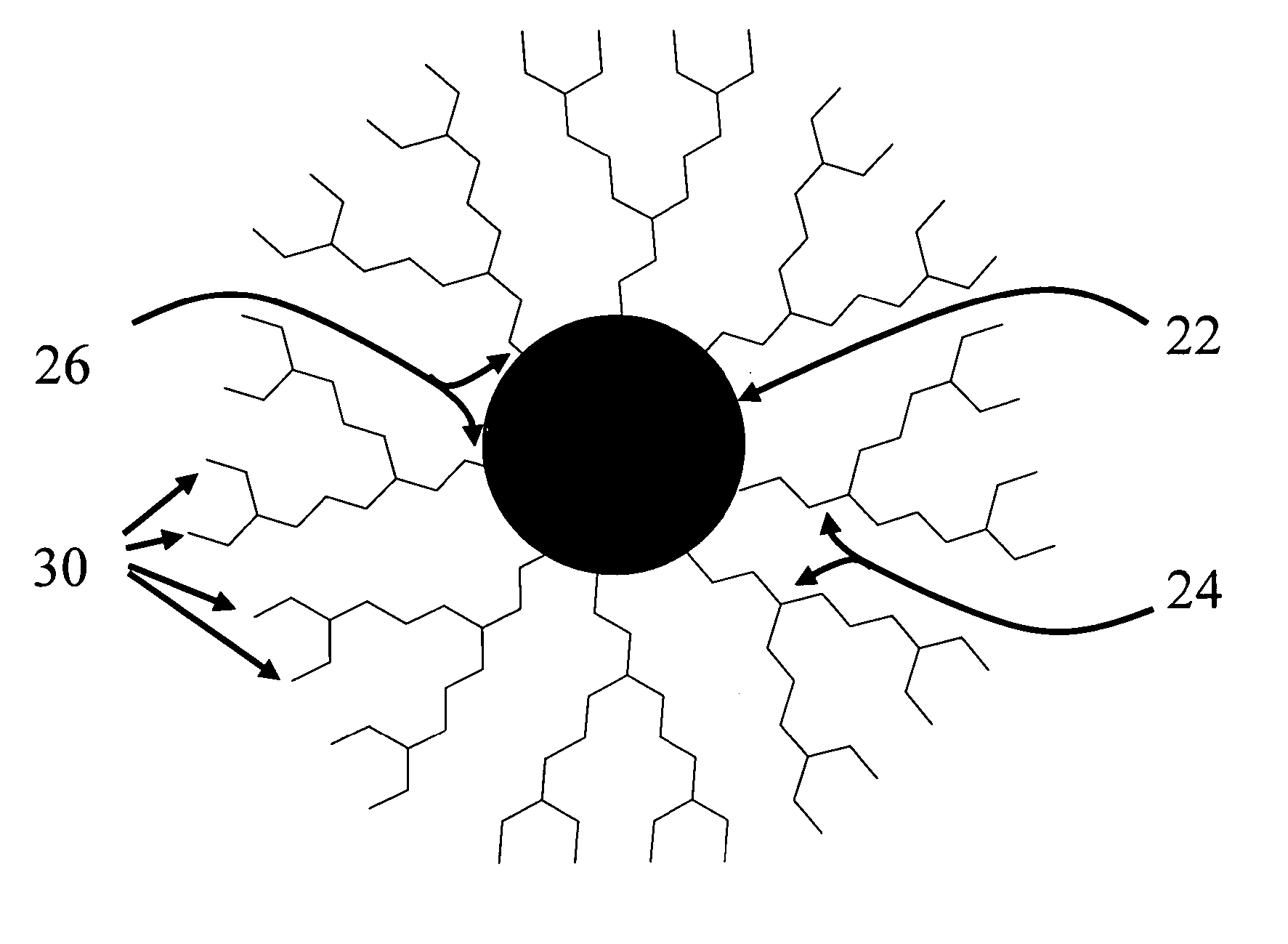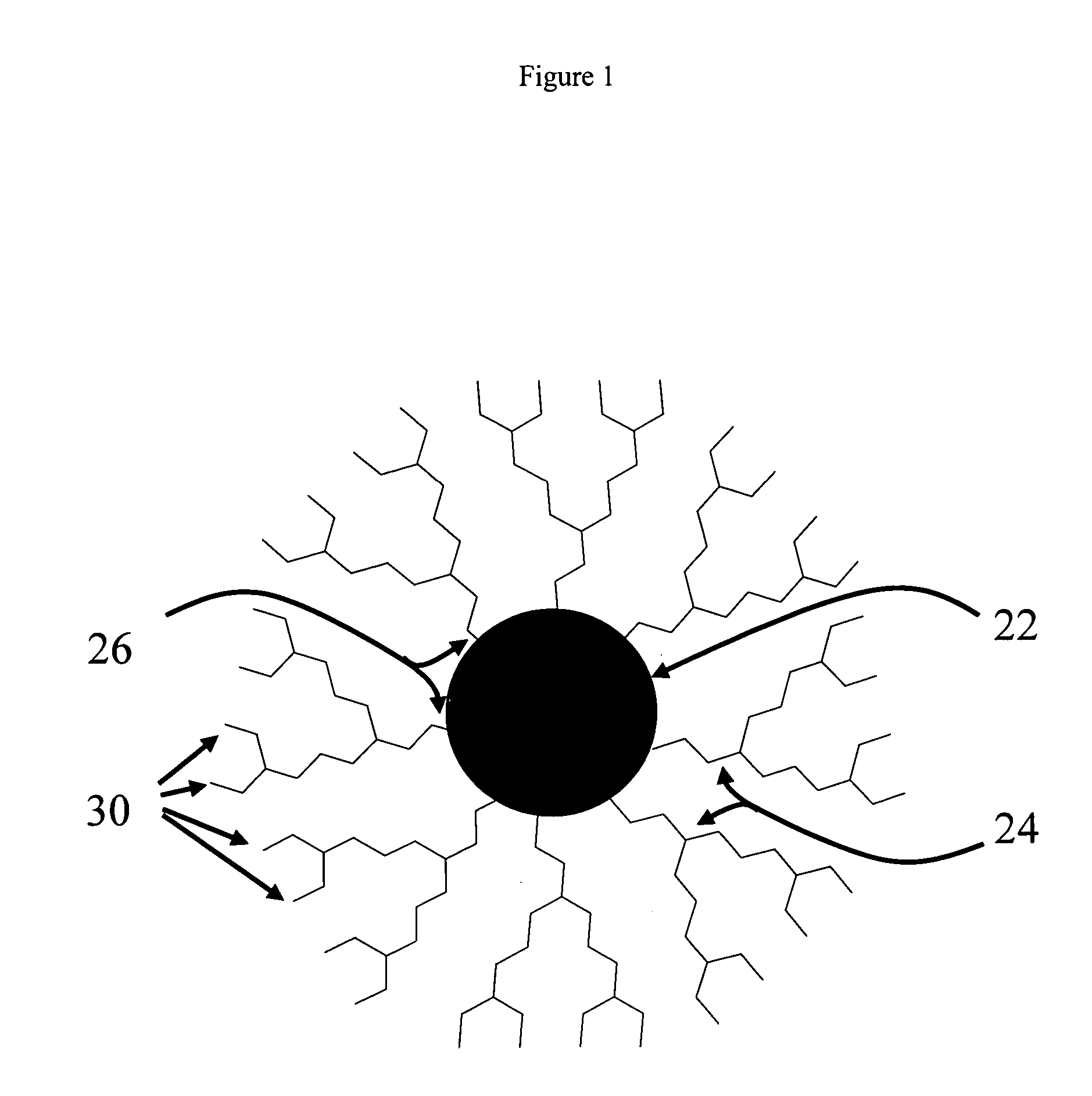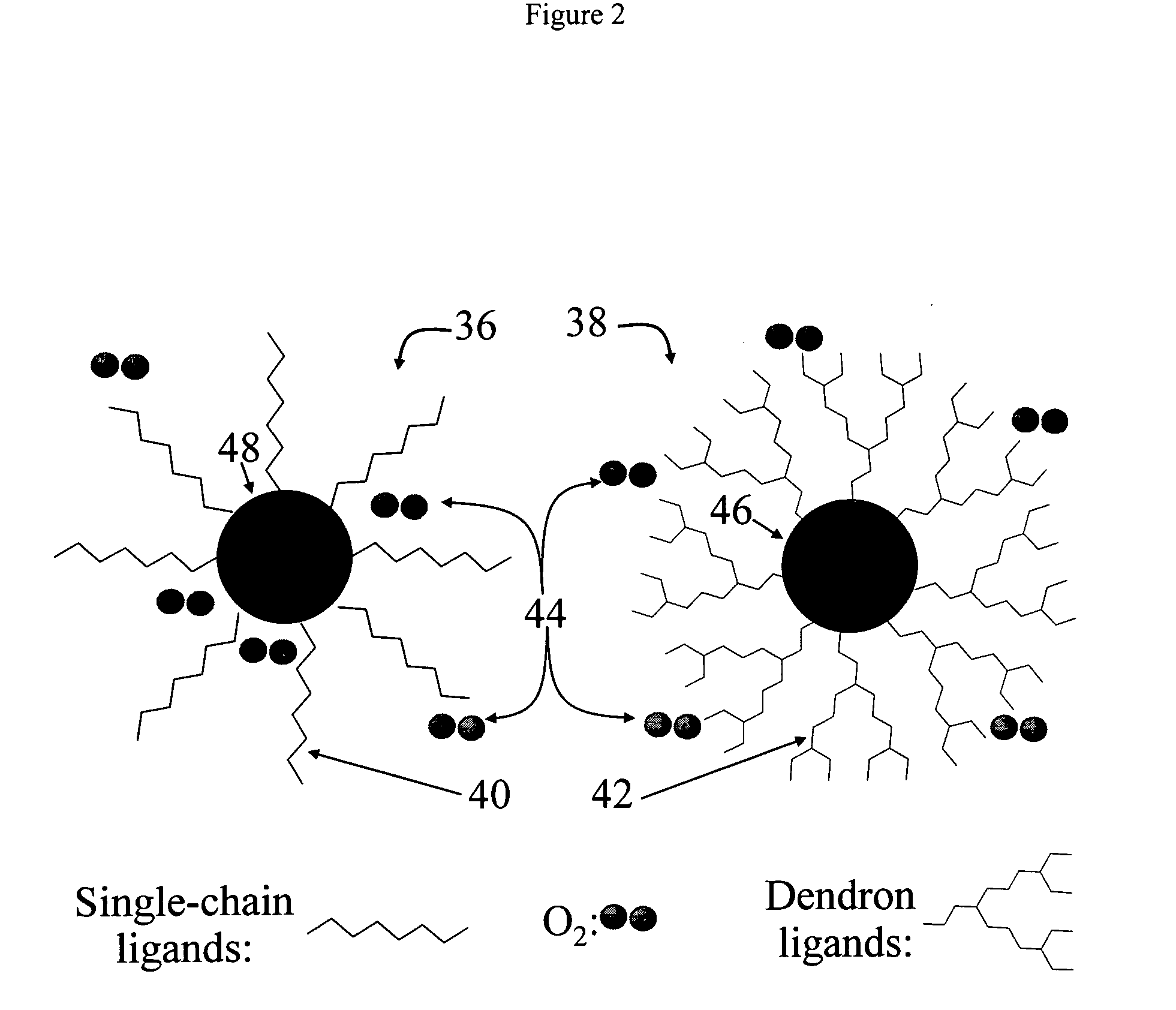Synthesis of stable colloidal nanocrystals using organic dendrons
a colloidal nanocrystal and organic dendron technology, applied in the field of organic ligands to stabilize nanocrystal colloids, can solve the problems of nanocrystal deterioration rapidly, difficult process reproduction, unsuitability, etc., and achieve the effect of increasing the number of functional groups, reducing the oxidation rate, and enhancing the protection against oxidation
- Summary
- Abstract
- Description
- Claims
- Application Information
AI Technical Summary
Benefits of technology
Problems solved by technology
Method used
Image
Examples
Embodiment Construction
[0034]The present invention is directed to the development of organic dendron ligands and other bulky molecules, which improve the stability of colloidal suspensions of inorganic nanocrystals. Because of the steric crowding characteristics and wide variety of complex secondary / tertiary structures of these molecules, these ligands may be densely packed and cross linked to form a dense, compact ligand layer completely coating a nanocrystal. These dendron protected nanocrystals (DP-nanocrystals) form highly stable nanocrystal colloidal suspension. Furthermore, these DP-nanocrystals are stable enough to readily withstand coupling reactions and purification and separation techniques required for biomedical and other applications. Those skilled in the art will appreciate that by changing the functional groups at the nanoparticle binding sites (NBS's) and active sites, it is possible to apply these protective ligands to any type of nanocrystal in any type of solution or solid matrix.
[0035]...
PUM
| Property | Measurement | Unit |
|---|---|---|
| Composition | aaaaa | aaaaa |
| Hydrophilicity | aaaaa | aaaaa |
| Hydrophobicity | aaaaa | aaaaa |
Abstract
Description
Claims
Application Information
 Login to View More
Login to View More - R&D
- Intellectual Property
- Life Sciences
- Materials
- Tech Scout
- Unparalleled Data Quality
- Higher Quality Content
- 60% Fewer Hallucinations
Browse by: Latest US Patents, China's latest patents, Technical Efficacy Thesaurus, Application Domain, Technology Topic, Popular Technical Reports.
© 2025 PatSnap. All rights reserved.Legal|Privacy policy|Modern Slavery Act Transparency Statement|Sitemap|About US| Contact US: help@patsnap.com



